MERCURY Ancient surface, clues to the past

Does Mercury Have Water?
You might think the surface of the closest planet to the Sun would be the last place we’d find water, but the surface of Mercury actually has ice! This is because there is almost no atmosphere. Air is great at holding on to heat, which is why winter coats are puffy. Sunlight heats up Mercury's surface to 430°C (806°F) during daytimes that last nearly 3 Earth months, but without an atmospheric blanket, the surface loses all that heat to space and drops to -180°C (-292°F) during the equally long nighttime. That’s well below the freezing point of water. How would ice survive the daytime, though? It wouldn’t, but at the poles where the Sun stays near the horizon as the planet turns, the bottoms of deep craters are forever in shadow. Data collected by NASA’s MESSENGER spacecraft and the Arecibo Observatory in Puerto Rico have confirmed water ice deposits on the floors of these polar craters that never see the light of day. Read More
Latest News About Mercury
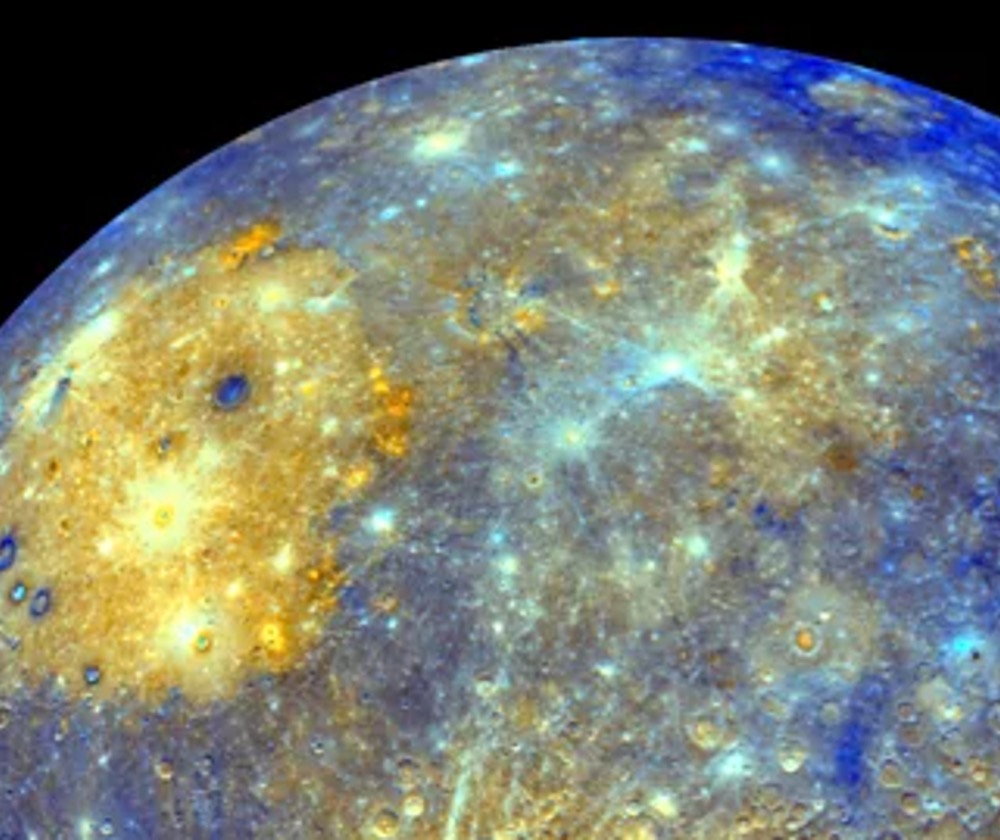
The Solar System's smallest planet may once have been as large as Earth
April 14, 2024
The Mercury we see today may be nothing more than the kernel of the planet that was once there Read more
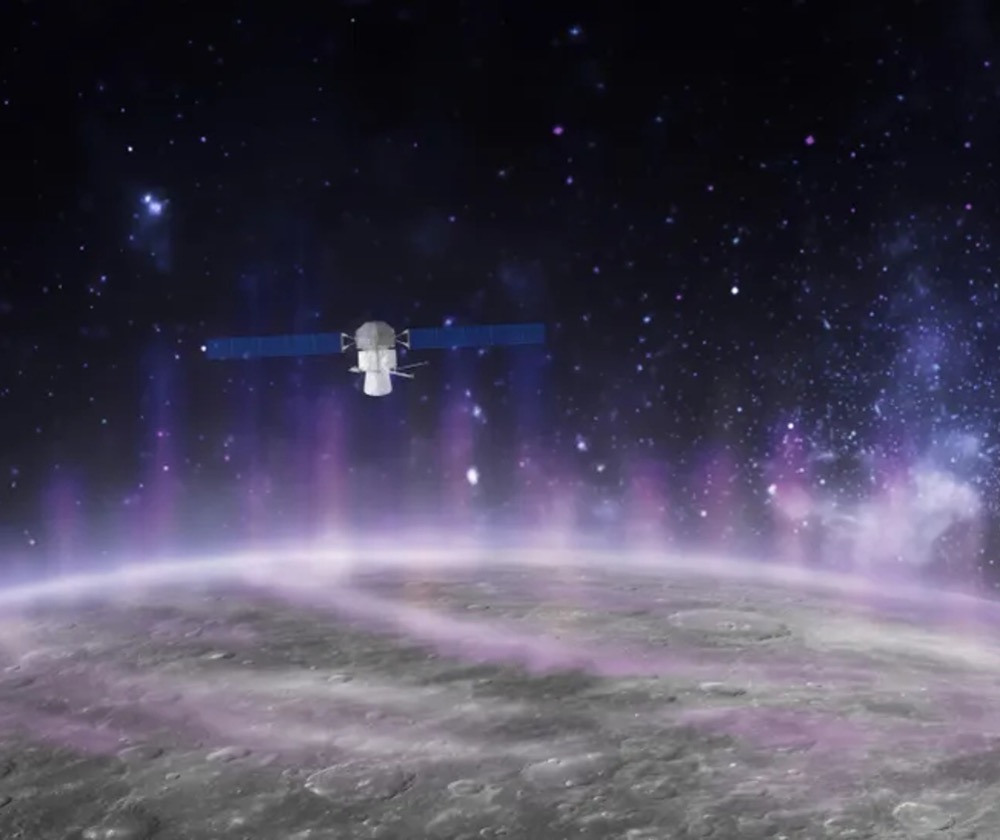
Mercury slammed by gargantuan eruption from the sun's hidden far side, possibly triggering 'X-ray auroras'
March 12, 2024
It's often blasted due to its proximity to the Sun Read more
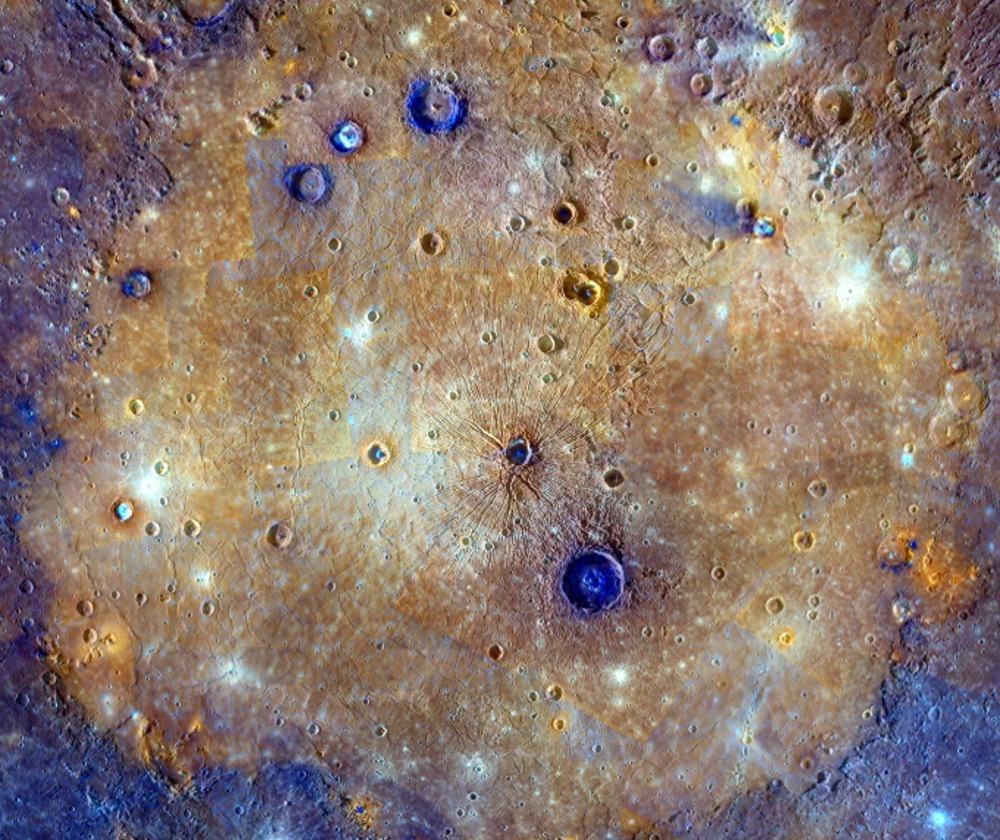
Salt may have carved out Mercury’s terrains, including glacierlike features
January 4, 2024
The surface might not be quite so terra firma, at least on geologic timescales Read more
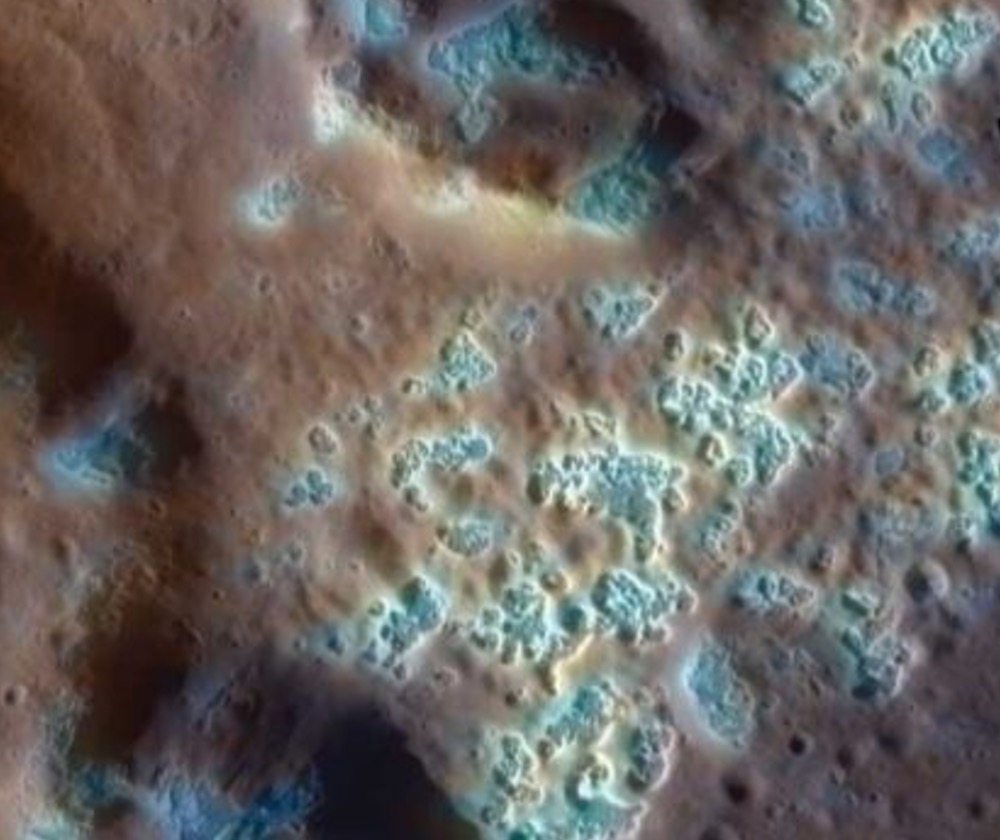
Are glaciers on Mercury a link to life?
December 28, 2023
Salty regions on the closest planet to the Sun may hint at extremophiles Read more
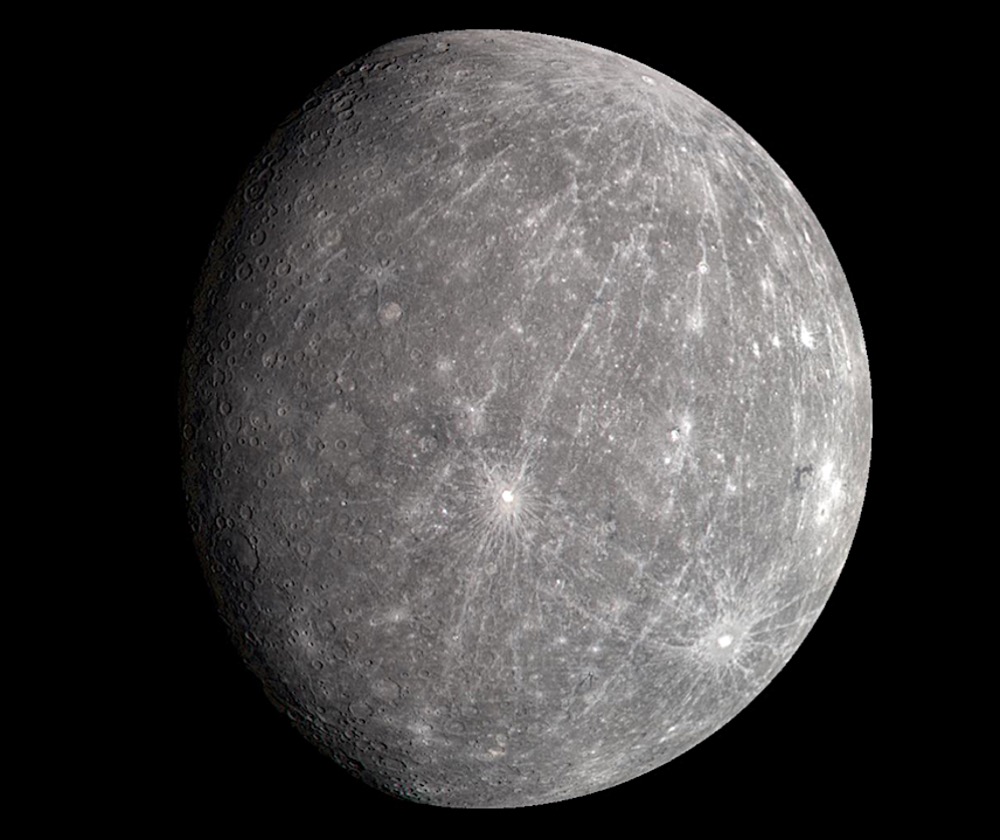
The origin of Mercury’s structure and chemical composition and their astrobiological implications
October 17, 2023
There's high concentrations of sulfur, carbon, potassium, sodium, and chlorine Read more
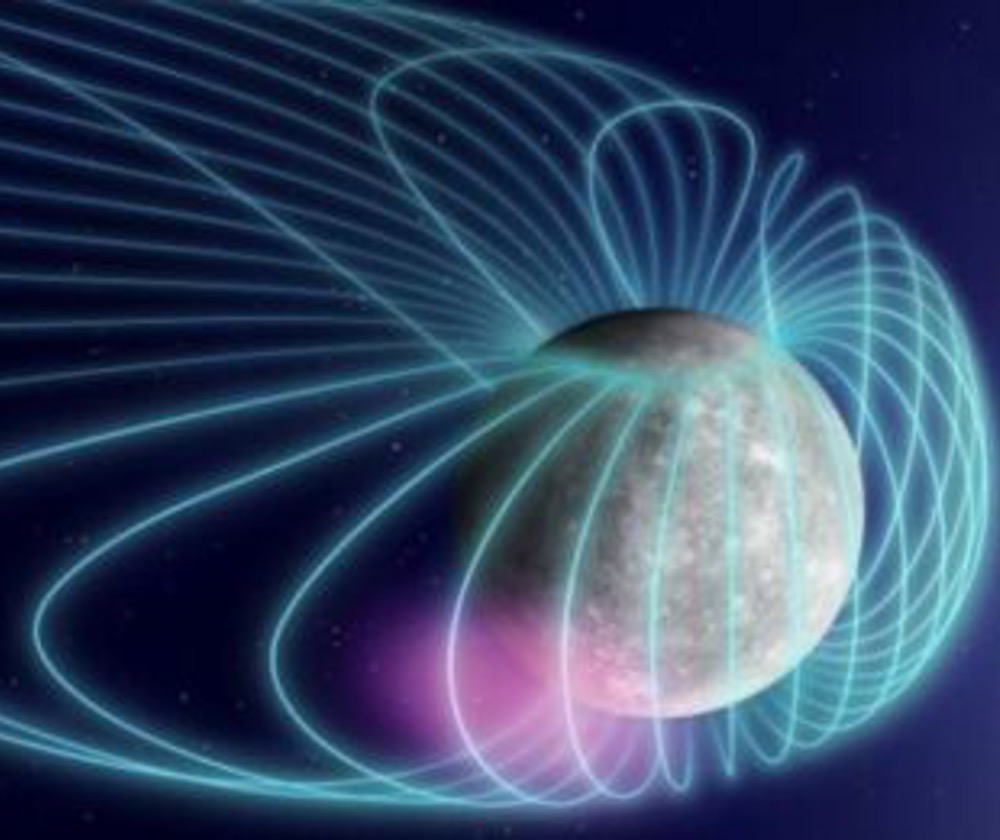
Mysterious 'singing' plasma waves detected around Mercury
October 16, 2023
Around planets that have a magnetosphere, something magical happens Read more
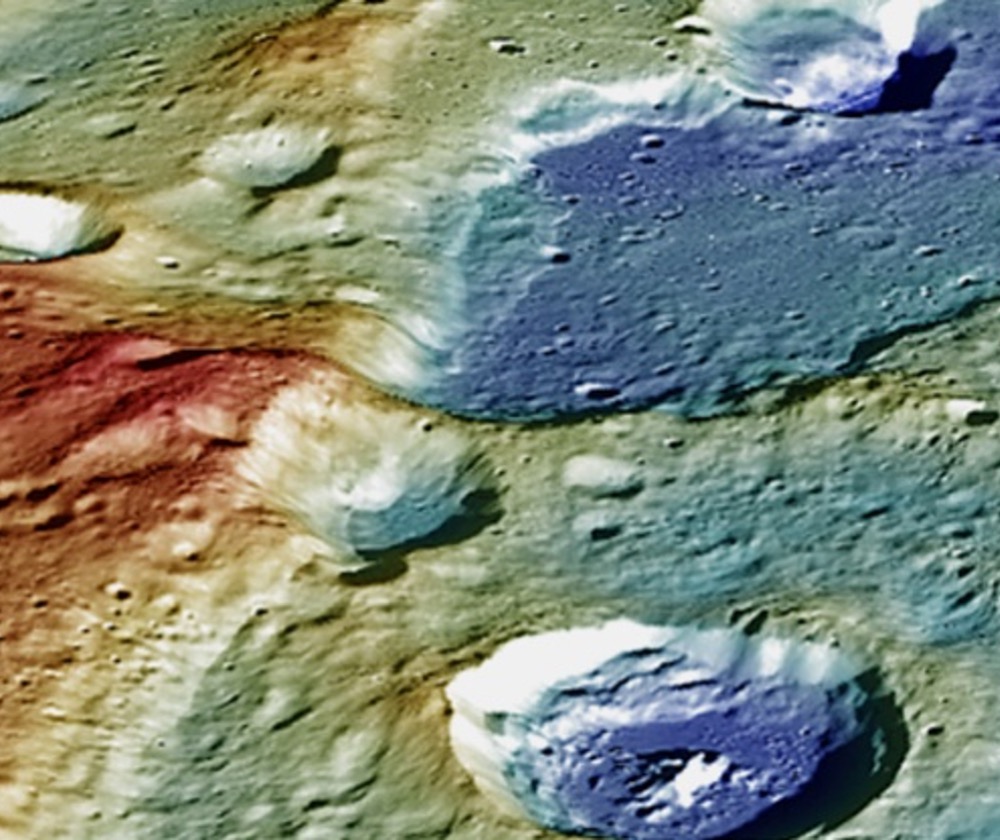
Mercury is still shrinking
October 14, 2023
Yes, Mercury’s surface is boiling, but the interior isn’t Read more
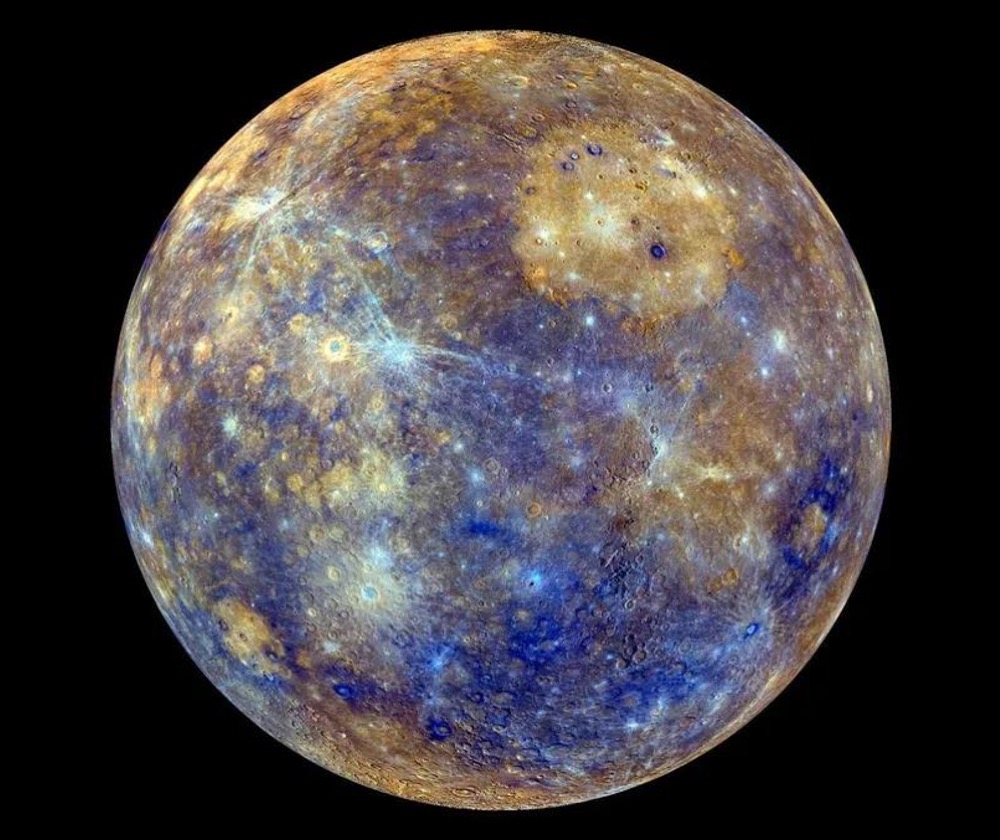
Mercury’s surface and atmosphere mapped by solar wind study
September 17, 2023
It's the first to examine the impact on the surface in terms of geographic location Read more
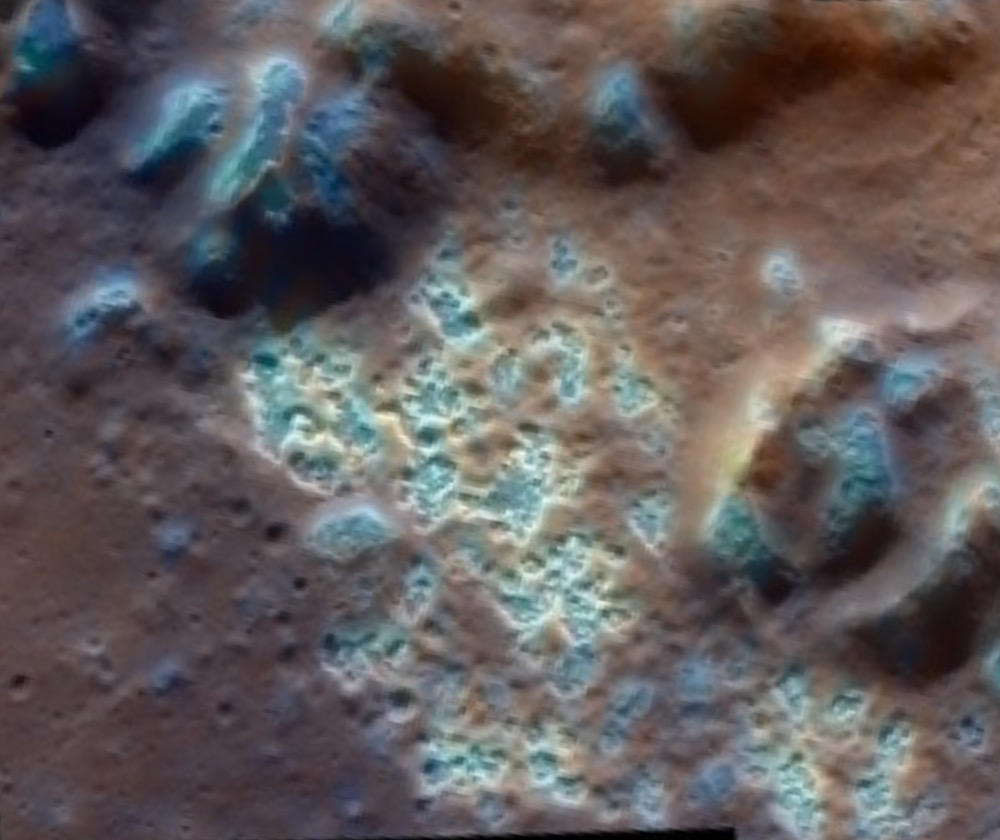
The mysterious origins of Mercury’s hollows might answer bigger questions
September 5, 2023
Enigmatic vapors that waft from the lowlands Read more
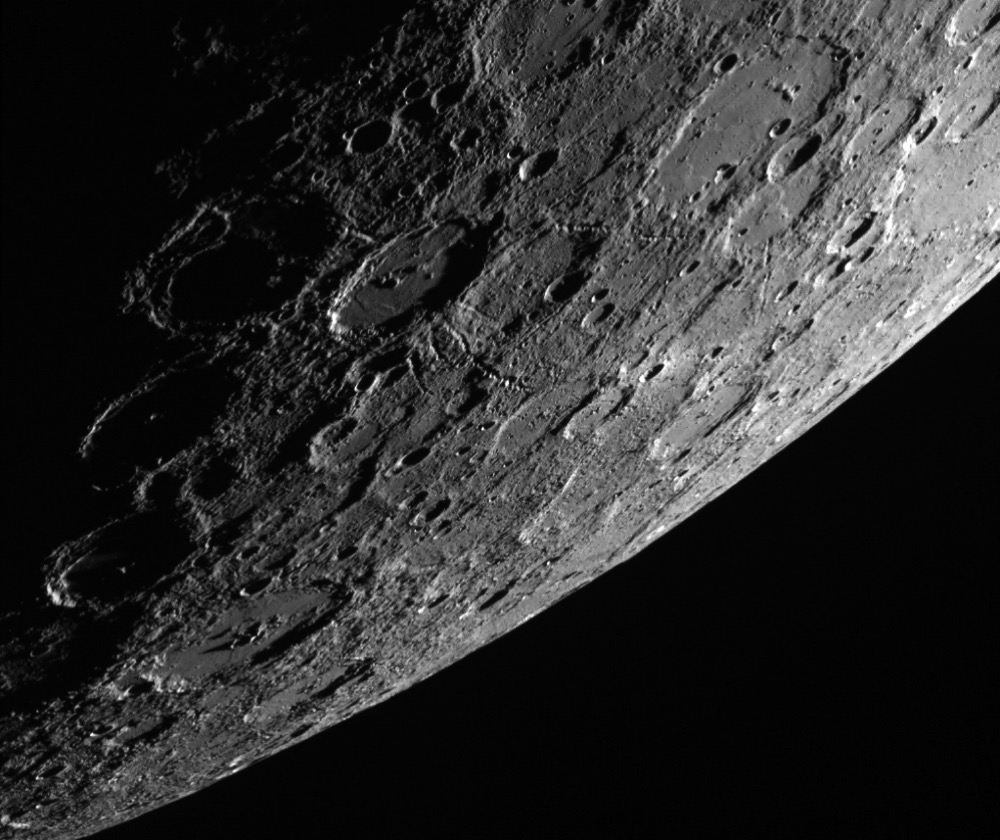
Cumulate overturn on Mercury may have produced varied mantle source regions
August 8, 2023
Its composition suggests it is an endmember case for magma ocean evolution Read more
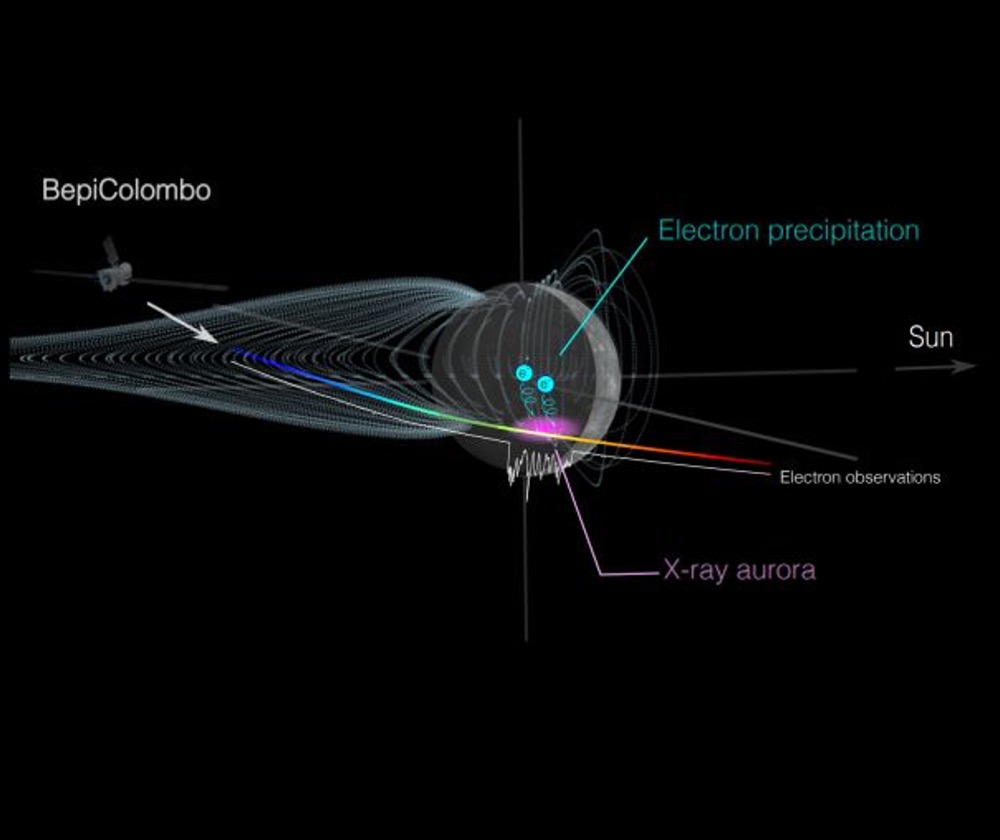
Mercury appears to have its own strange aurora after all
July 19, 2023
Auroral processes take place in spite of a practically nonexistent atmosphere Read more
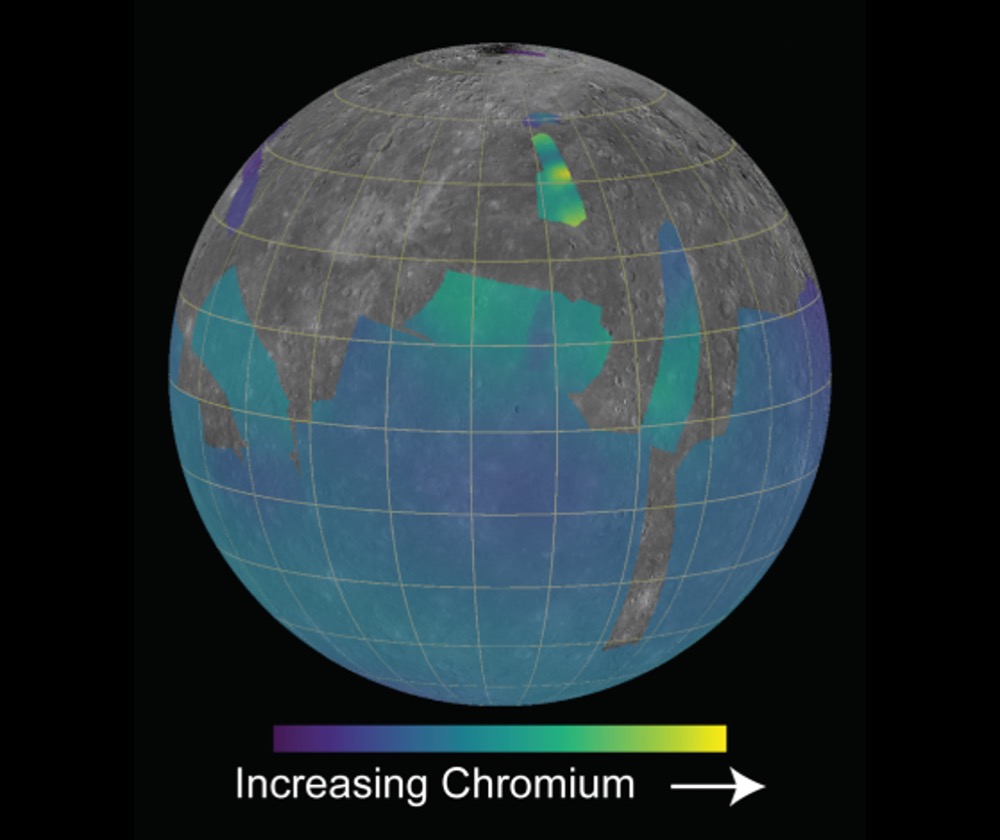
Chromium on Mercury hints at planet’s offbeat chemistry
July 13, 2023
It's the first time chromium has been detected and mapped on a planetary surface Read more
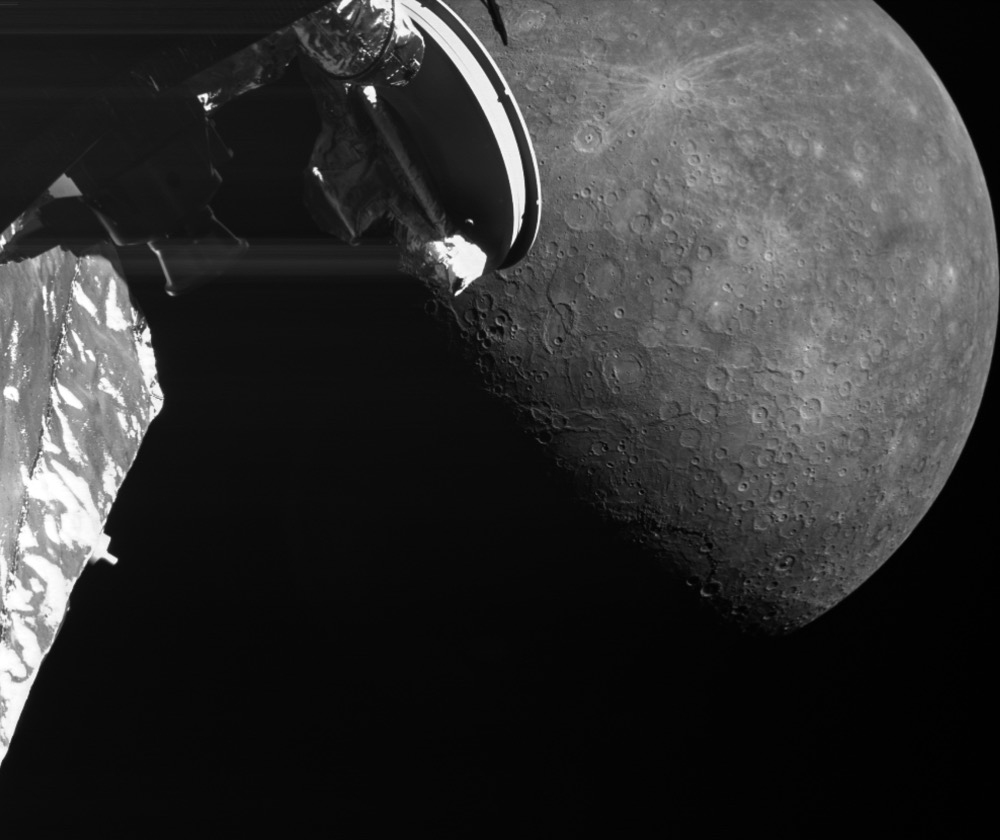
A trio of images highlight BepiColombo’s third Mercury flyby
June 20, 2023
The closest approach took place about 236 km above the planet’s surface Read more
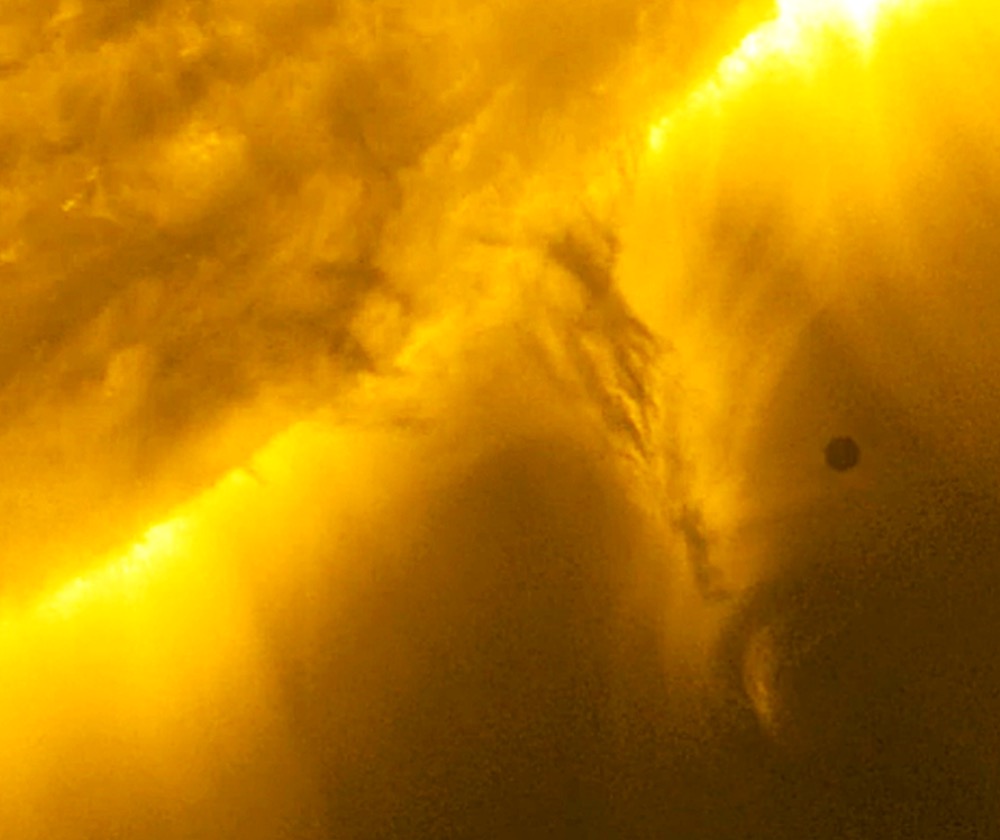
Maps of solar wind plasma precipitation onto Mercury’s surface
May 19, 2023
It’s magnetic field shields the surface from 90% of the solar wind Read more
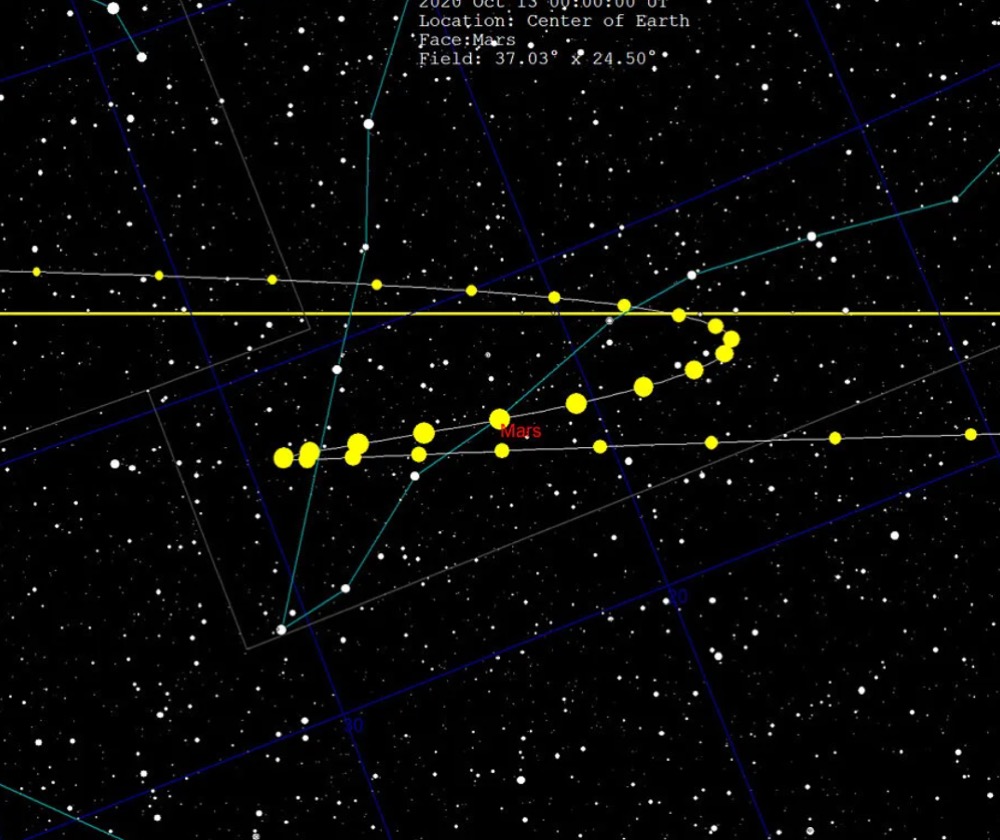
What does “Mercury in retrograde” actually mean?
April 19, 2023
It's technically called “apparent retrograde motion” since it’s not an actual change in the planet’s motion Read more
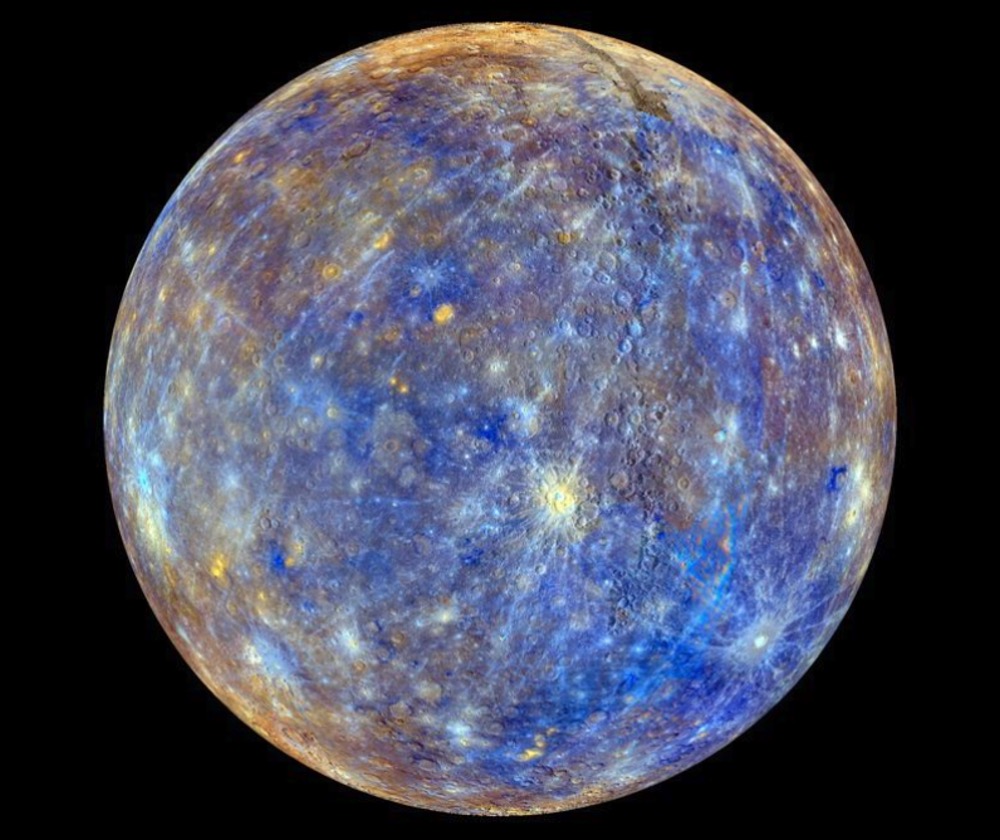
Why is Mercury so weird? Blame the giant outer planets
March 27, 2023
Astronomers have had difficulty explaining its small size and huge core Read more
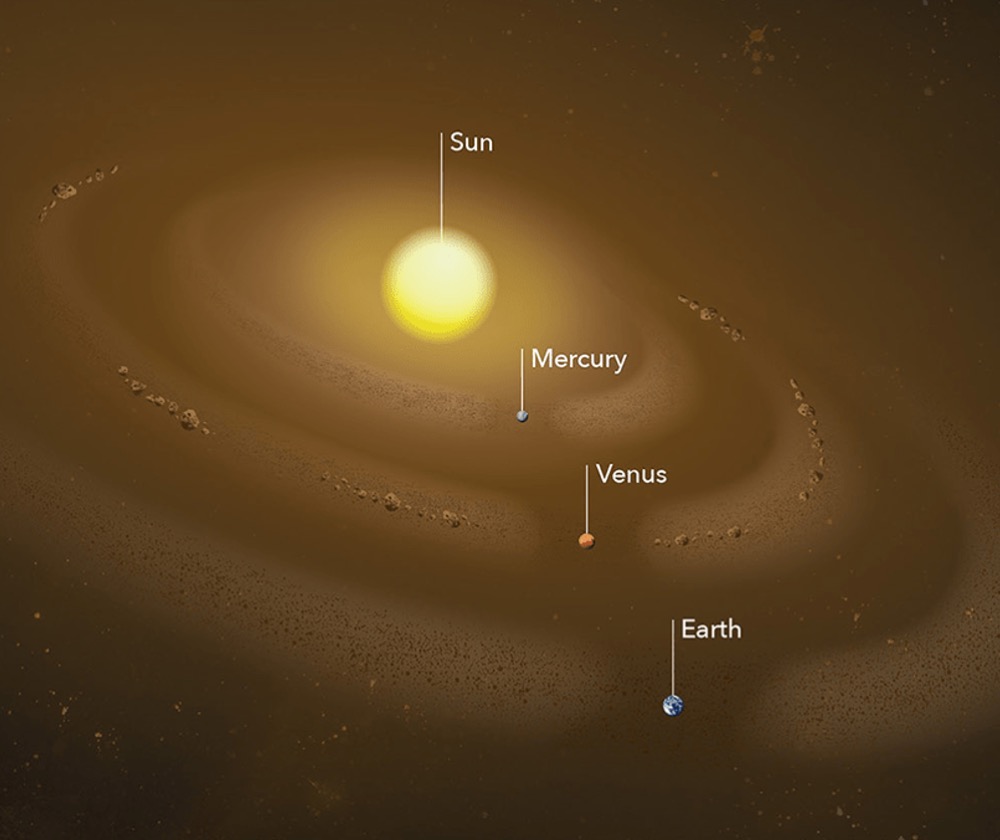
Mercury isn’t alone in orbit, and scientists don’t know why
February 27, 2023
A cloud of dust traces the planet’s orbital path. By all accounts, it shouldn’t be there Read more
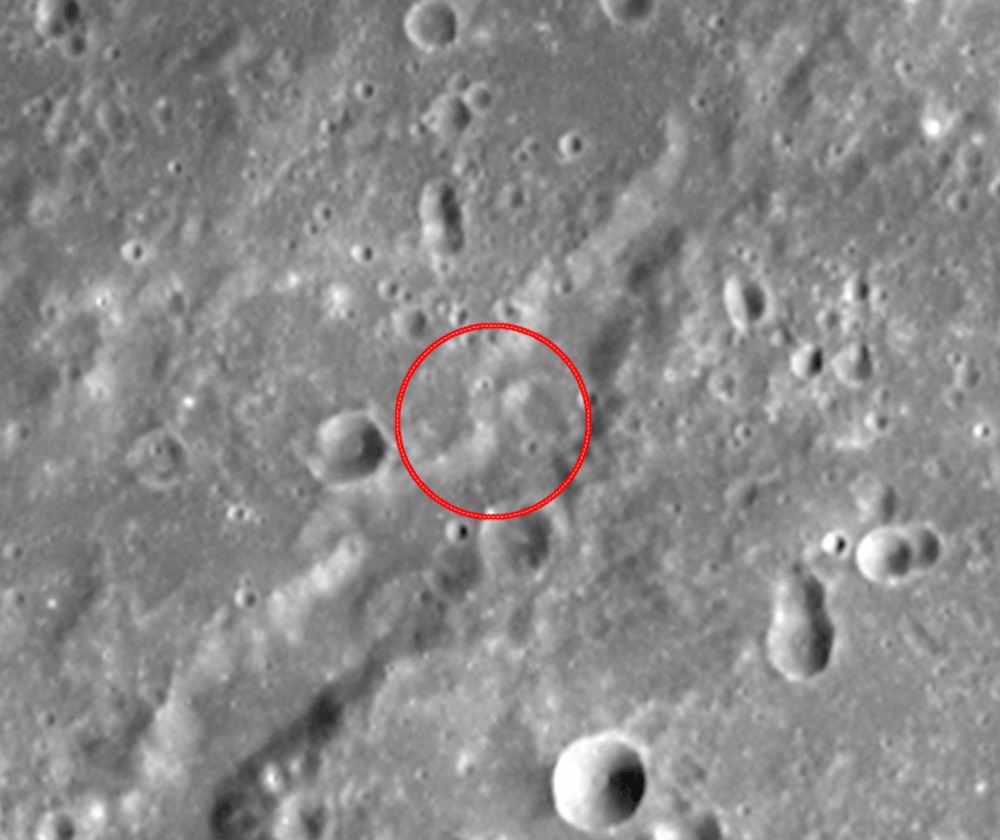
MESSENGER reveals a more dynamic Mercury surface
September 28, 2022
Image pairs indicate that 99% of the planet’s surface could be altered in the next 25 million years Read more
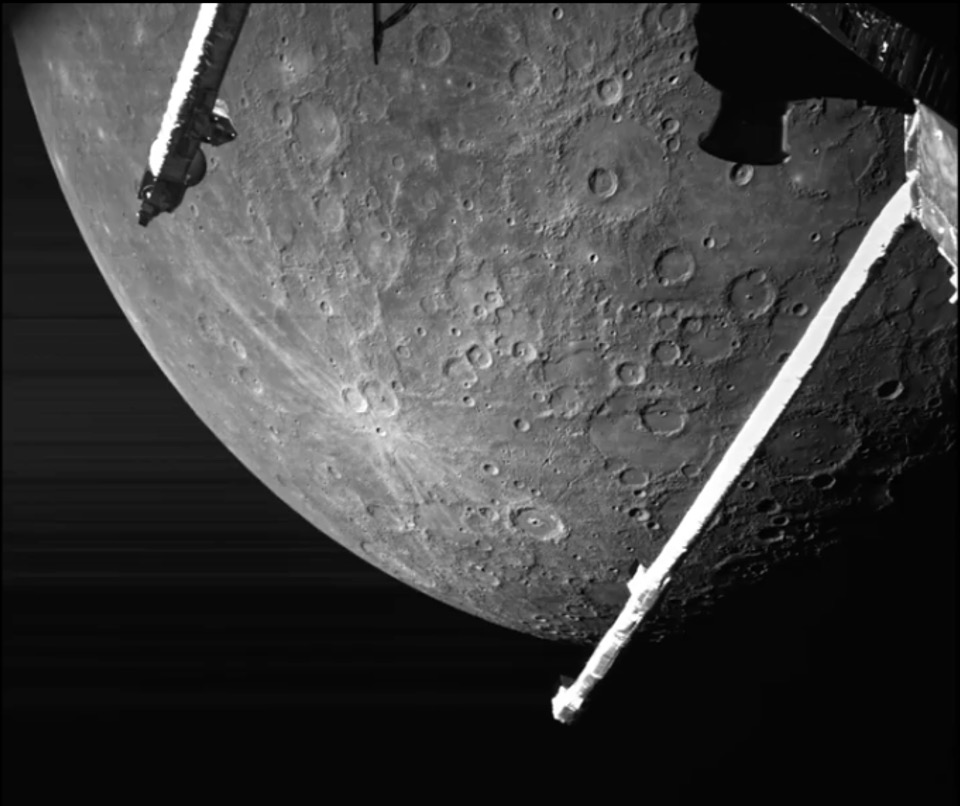
Watch Mercury roll by as BepiColombo probe makes superclose flyby
June 27, 2022
The video reveals a plethora of geological features, including Caloris Planitia,its largest impact basin Read more
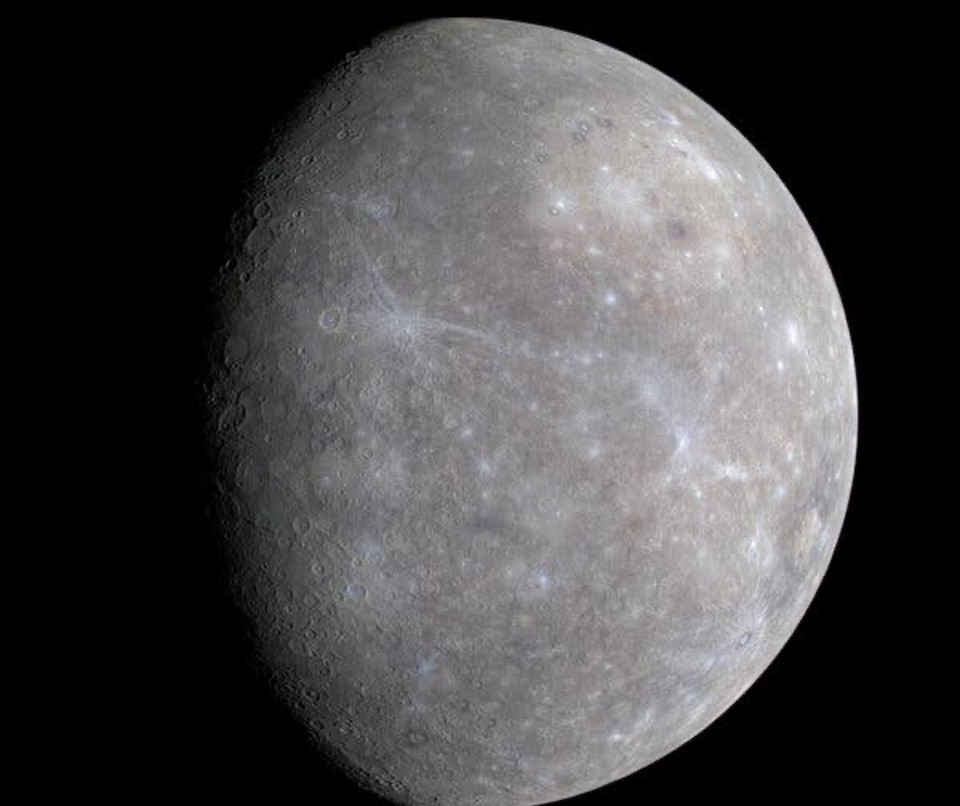
Shards of the planet Mercury may be hiding on Earth
May 23, 2022
Studying them could unlock the planet’s mysteries Read more
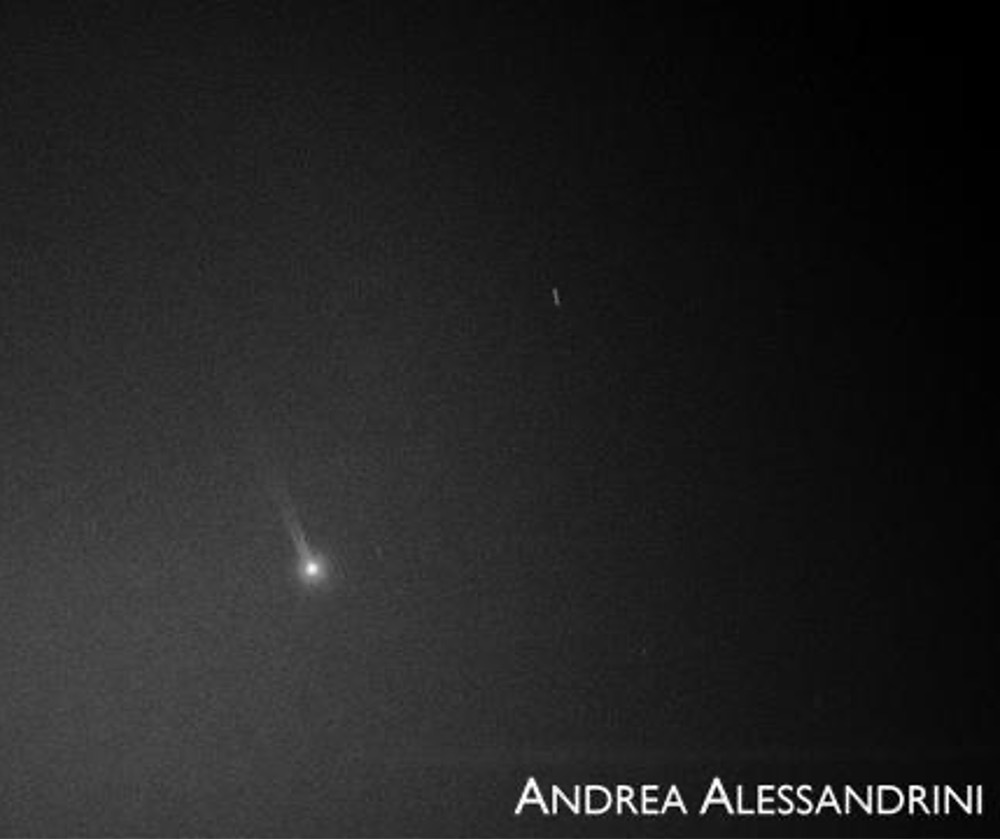
Did you know? Not only comets have tails. The Moon, Mercury do too
May 2, 2022
Pressure from the solar wind streams around the planet guiding the atoms into a thin tail that always points from the Sun Read more
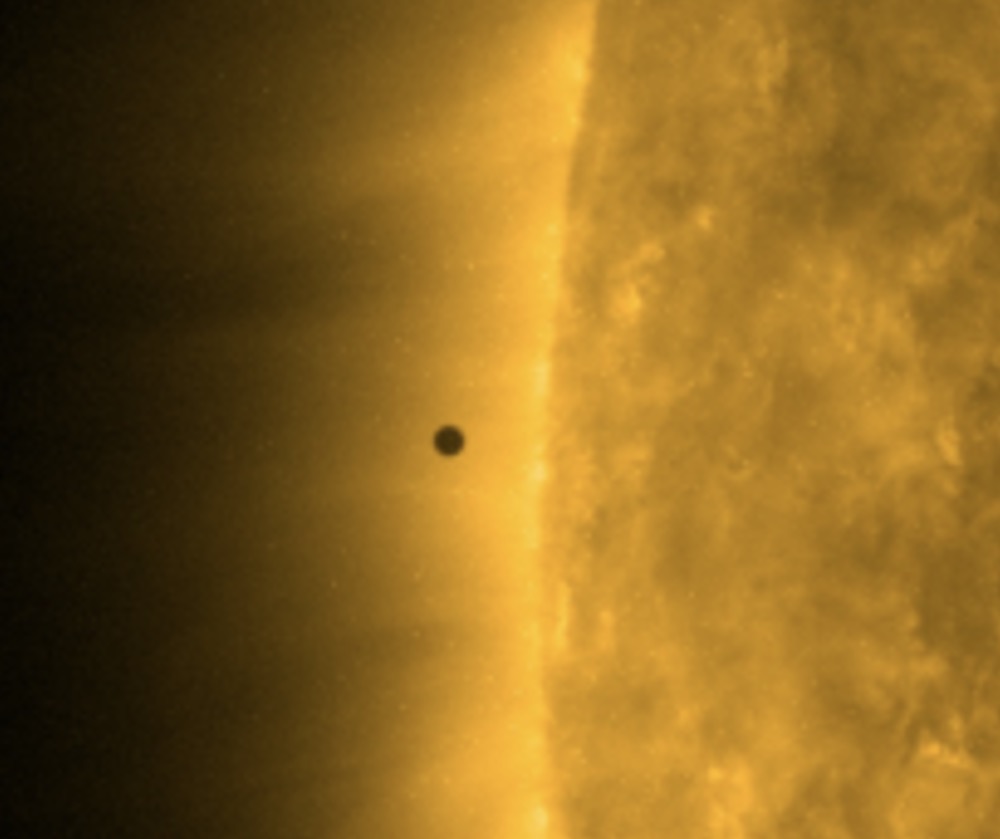
The sun has blasted Mercury with a plasma wave
April 14, 2022
The sun's activity has been increasing far faster than scientists forecasted Read more
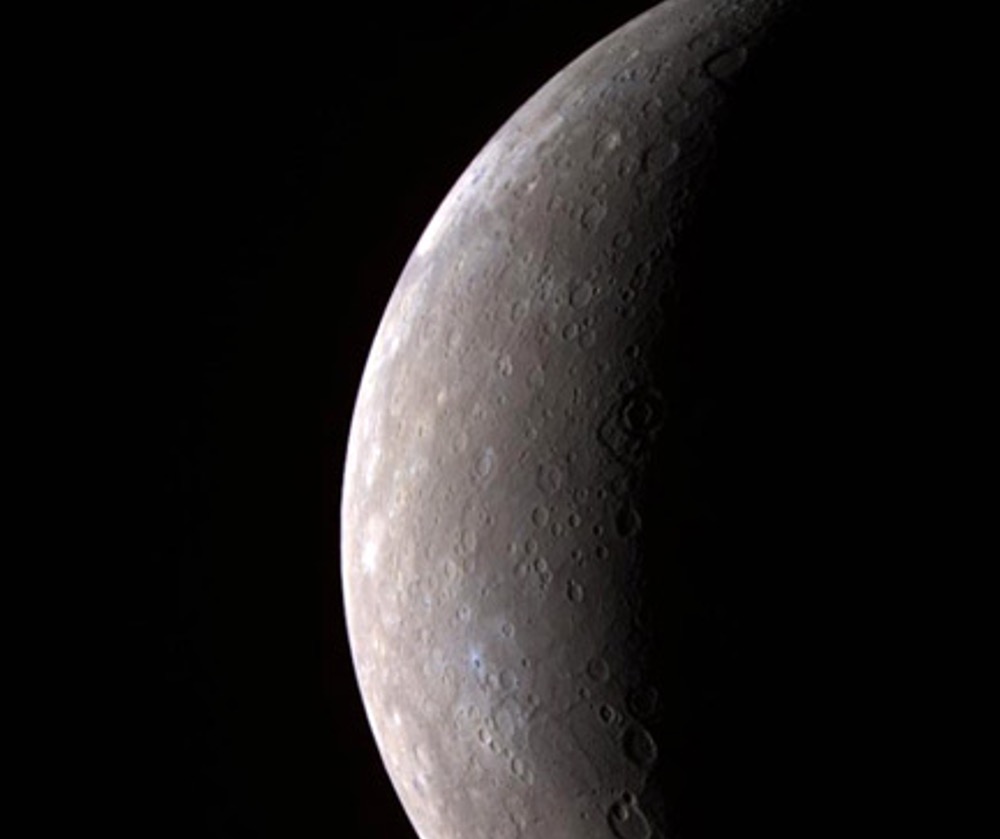
Planet Mercury has magnetic storms, new research shows
March 31, 2022
The significantly weaker magnetic field, when compared with Earth, enables charged particles to escape its magnetosphere more efficiently Read more
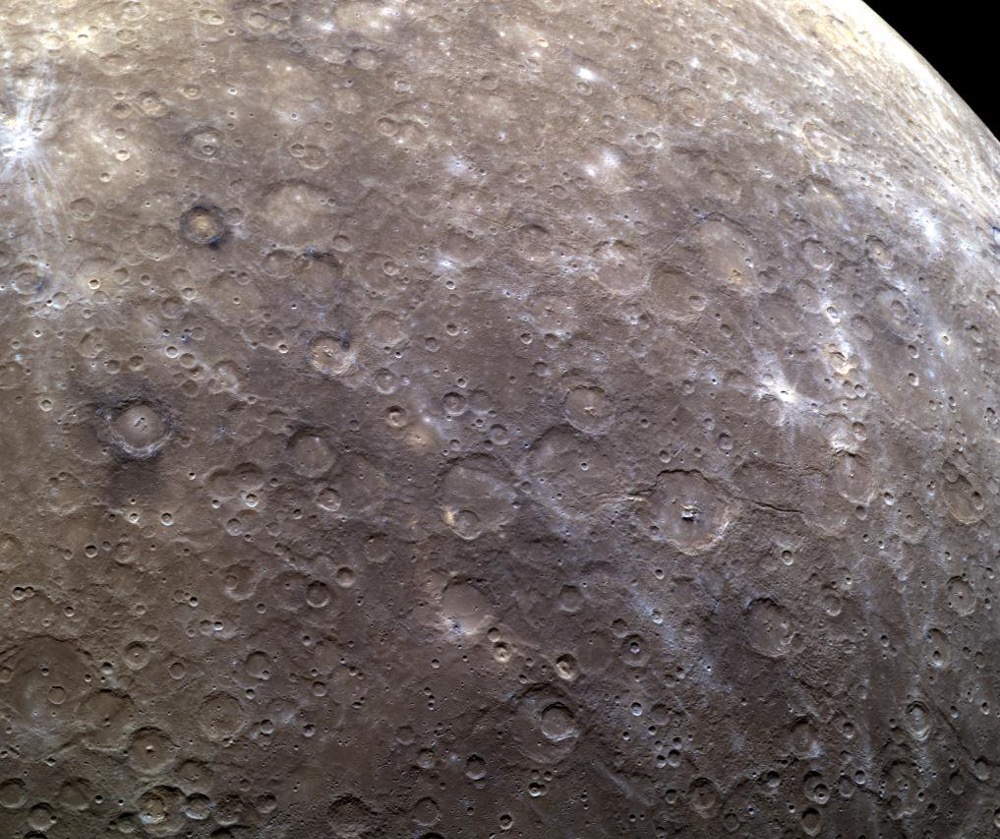
Mercury’s cratered crust may hold glittering gemstones
March 29, 2022
Graphite and violent meteorite impacts may have combined to form sparkling diamonds Read more
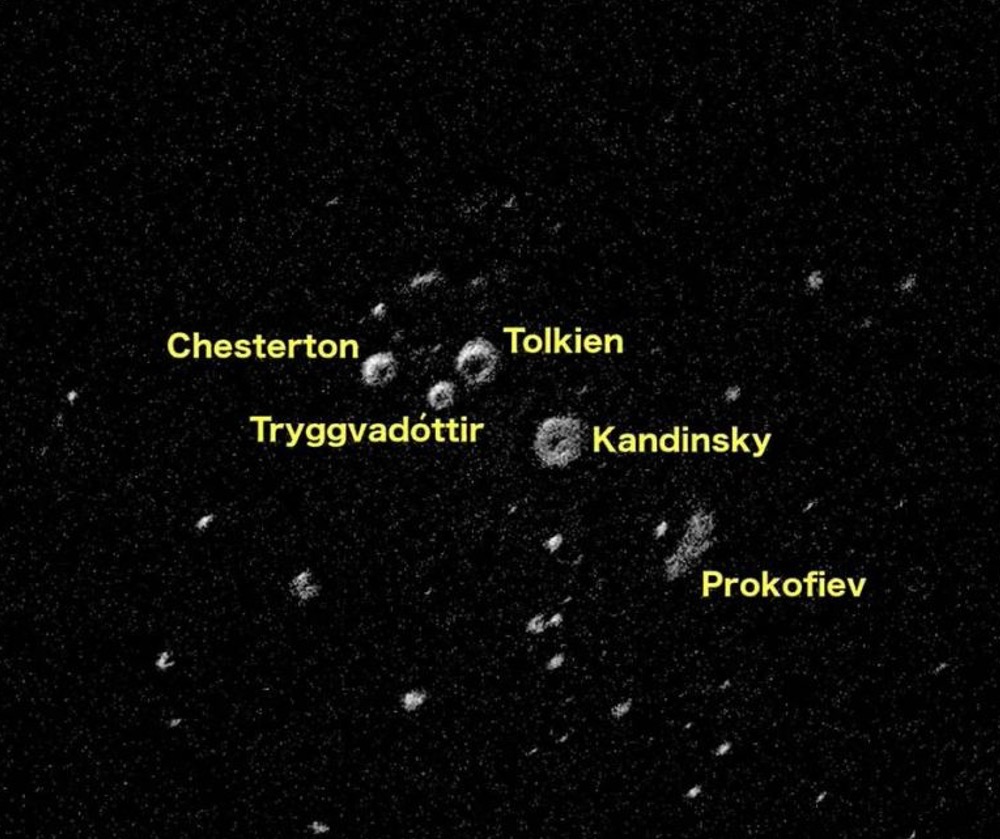
There are deposits of ice at Mercury's poles too
March 18, 2022
Although the Arecibo radio telescope is no more, it continues to deliver scientific discoveries Read more
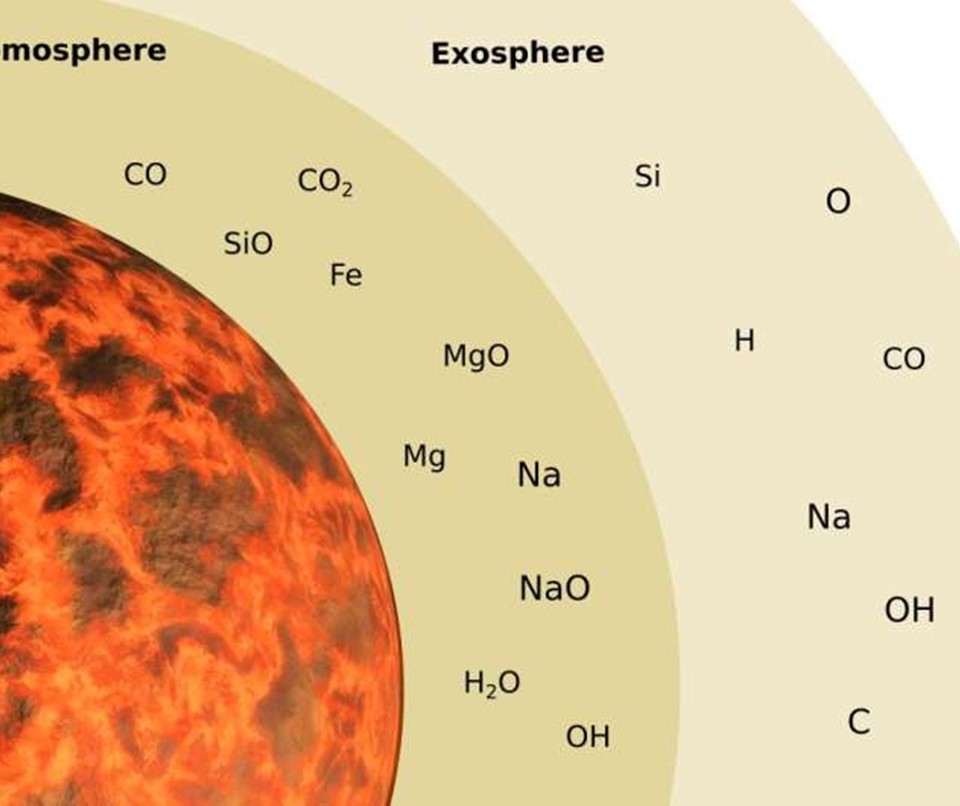
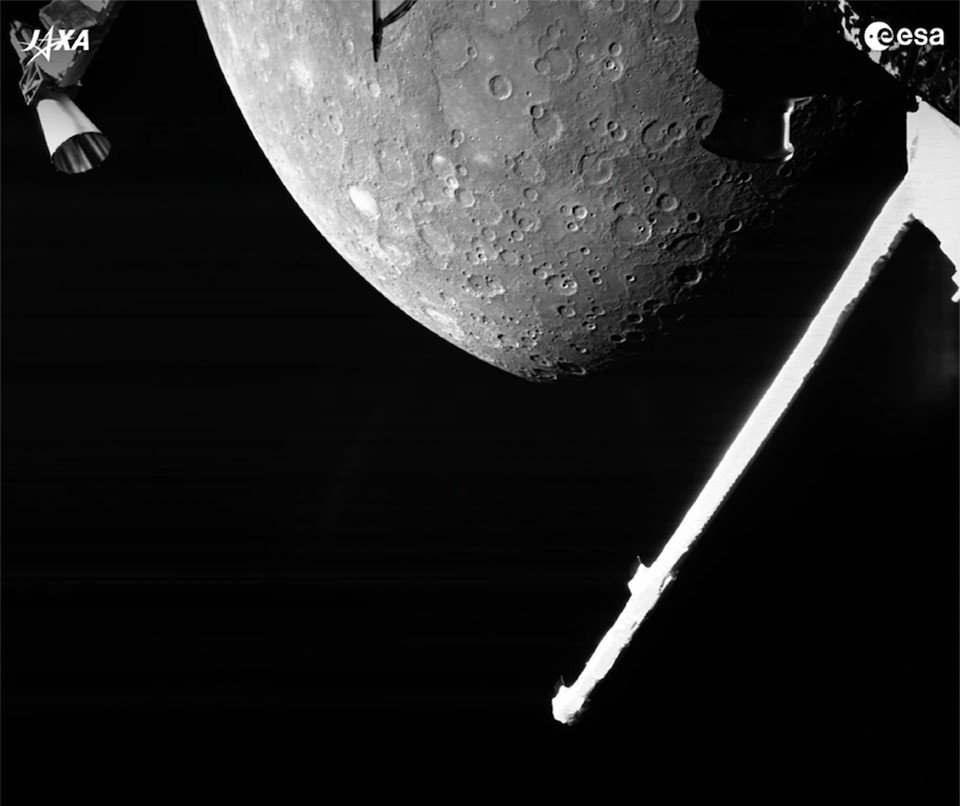
European spacecraft reveals rare images of Mercury’s craters after a ‘flawless’ flyby
October 2, 2021
The mission to the smallest and least explored terrestrial planet, Mercury, sent back its first images Read more
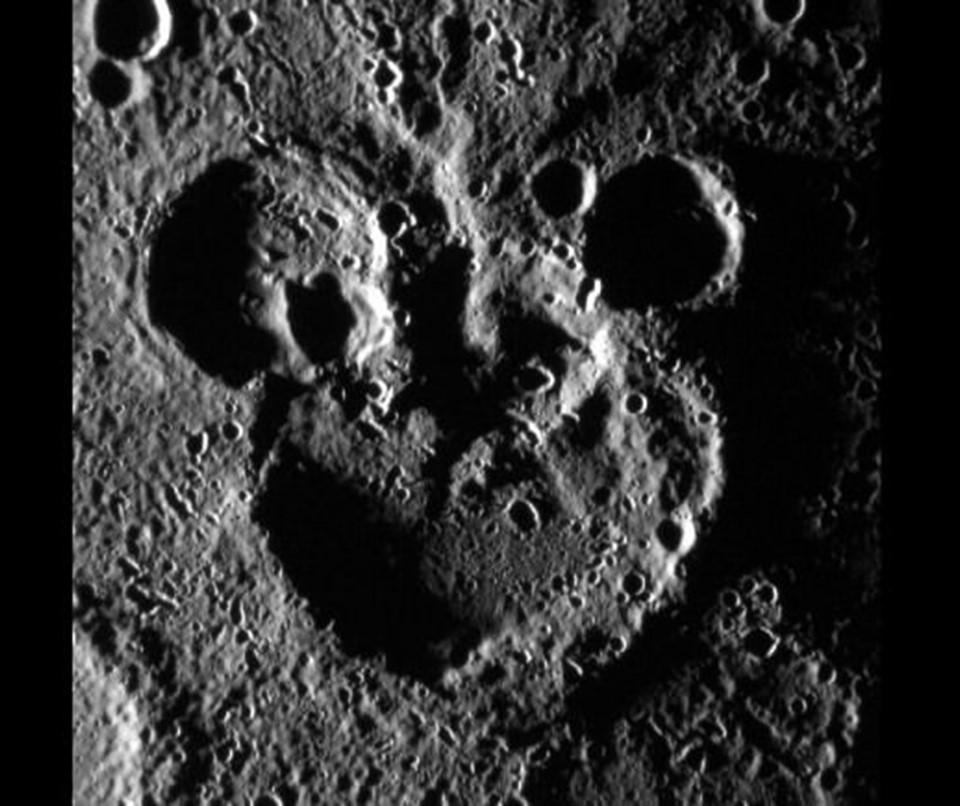
It's time to send a lander to Mercury
September 3, 2021
So much in the astronomy community revolves around the decadal survey Read more
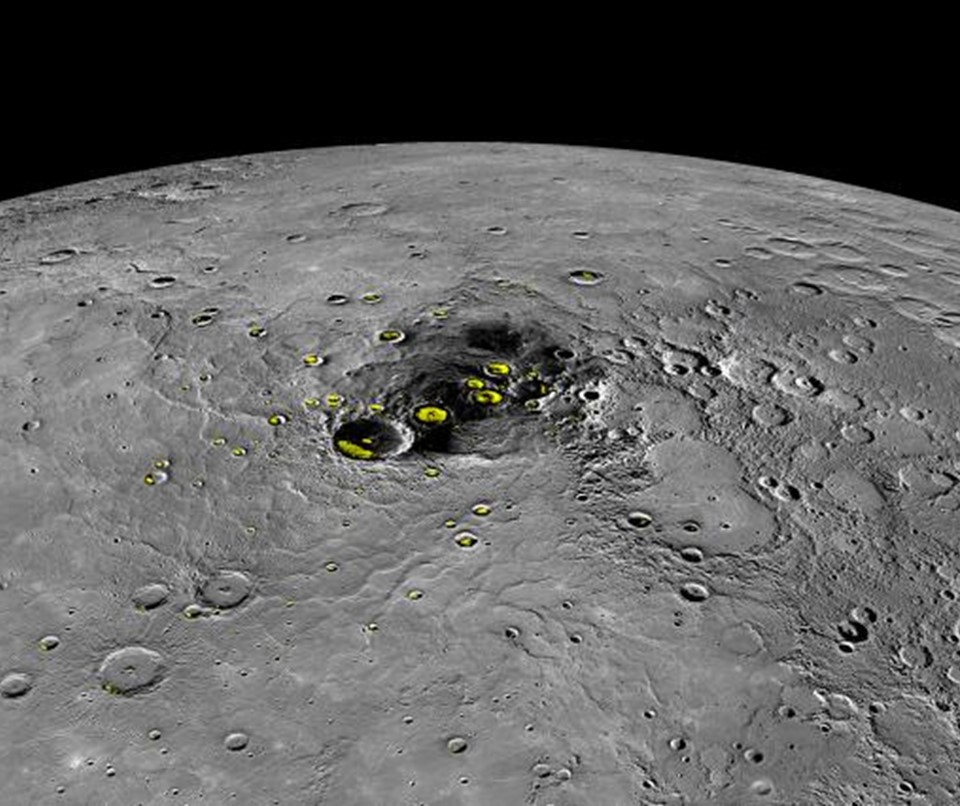
Mercury's surface is a true hellscape - here's how human technology could survive it
August 26, 2021
From the surface, the Sun would appear three times larger than it does from Earth Read more
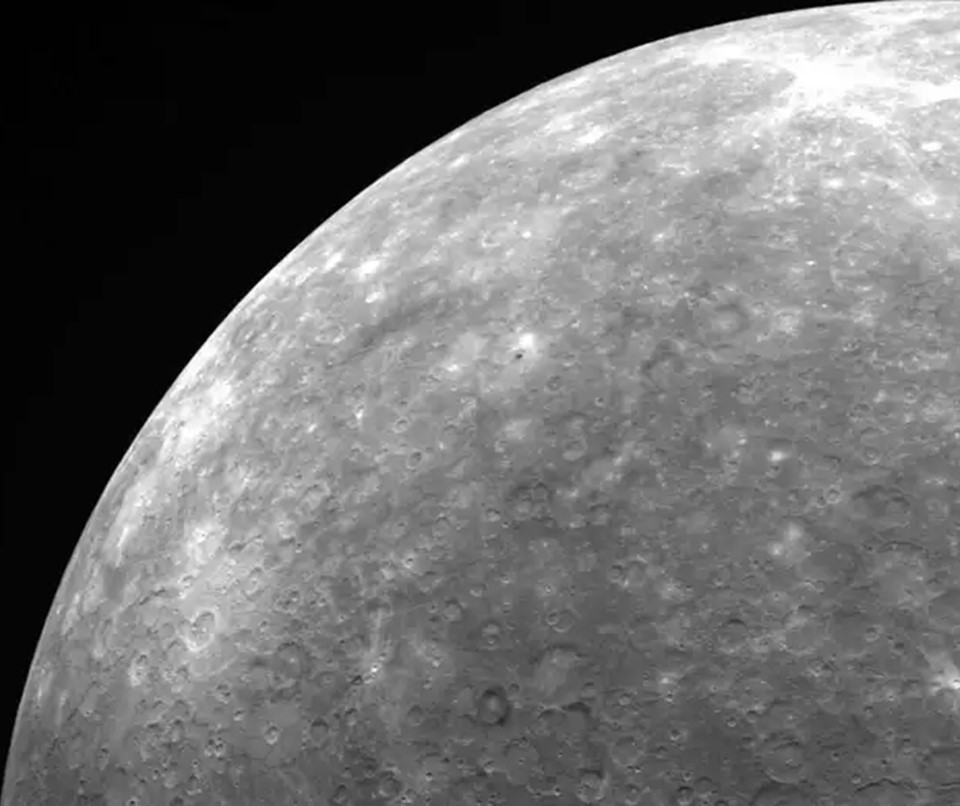
Mercury has almost no boulders on its surface and we're not sure why
August 12, 2021
Rocks of at least 5 metres across are far less abundant on the planet’s surface than expected Read more
Fascinating Facts About Mercury
- The Sun appears more than three times as large in Mercury's sky as it does from Earth, and sunlight is about 11 times brighter.
- It takes Mercury 59 Earth days to rotate once around its axis. However, because this rotation is so slow compared to its orbit around the Sun, it takes 176 Earth days to go through one day/night cycle, which is twice as long as a year on Mercury.
- Mercury's craters are named after famous writers, artists, musicians, composers, and choreographers.
- Unlike all other major planets, Mercury has no atmosphere. Sunlight and meteor impacts create an exosphere, a diffuse cloud of gas around the planet made of oxygen, sodium, hydrogen, helium and potassium.
- Mercury has a tail, kind of like a comet. It has barely any magnetic field to protect it, so the intense solar wind blows some of its exosphere out into space.
- With no atmosphere to hold on to heat, temperatures plummit at night and in shadows. Water ice has been found at the poles at the bottom of deep craters that sunlight never reaches.
- Since Mercury’s orbit is within Earth’s orbit, it only appears in our sky near to the Sun, either just before dawn or just after sunset. It's very difficult to spot due to its small size, dark surface, position just over the horizon, and the sun-brightened sky around it.
Source: NASA
Missions
BepiColombo (2018)
A pair of orbiters that will study the surface, internal composition and magnetosphere of Mercury
MESSENGER (2004)
Imaged and mapped almost the entire surface of Mercury, measured the chemical composition of the rocks, and studied the interior
Mariner 10 (1973)
This was the spacecraft to fly by Mercury and image the surface up close



